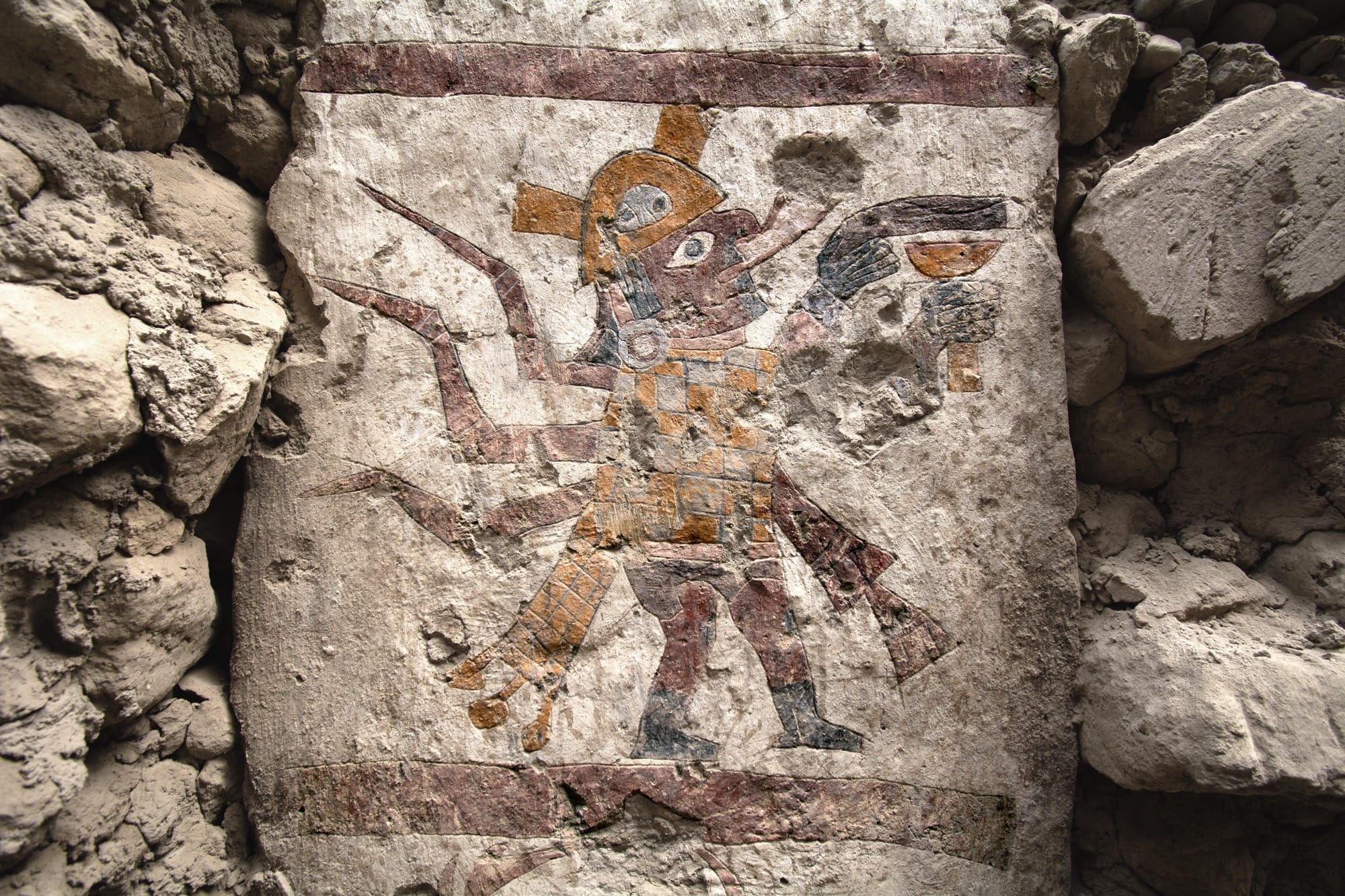This post was originally published on Colossal
Between about 350 and 850 C.E., a society known as the Moche thrived in the coastal valleys of northern Peru. Pañamarca, in the Nepeña Valley, is the southernmost center of the Moche culture and the site of a remarkable series of recent archaeological discoveries, including the latest: a monumental pillared hall with vibrantly painted walls.
The Archaeological Landscapes of Pañamarca, founded in 2018, is a collaboration between Peruvian and U.S. archaeologists, art historians, and conservators. Its research and digs are supported by the National Geographic Society, the Institute of Latin American Studies at Columbia University, and the Avenir Conservation Center at the Denver Museum of Nature & Science.

This year, archaeologists uncovered a pillared room containing evidence of its use by a high-status female leader. Scenes depict the powerful woman receiving visitors in procession or seated upon a throne.
“Scholars will debate whether the woman painted on the walls of the throne room is human or mythical (a priestess, goddess, or queen),” researchers say. “But the physical evidence of the throne, including the erosion to its back support and the recovery of greenstone beads, fine threads, and even human hair, make clear that it was occupied by a real living person—and the evidence all points to a seventh-century woman leader of Pañamarca.”
The figure portrayed on the walls is associated with the crescent moon, the sea and its creatures, and the fiber arts. Additional murals uncovered this past July reveal a scene of an entire workshop of women spinning and weaving, along with a retinue of men carrying textiles and the leader’s crown—which includes her braids.
Lisa Trever, professor of art history at Columbia University, says, “Pañamarca continues to surprise us, not only for the ceaseless creativity of its painters but also because their works are overturning our expectations of gender roles in the ancient Moche world.”

The colorful wall paintings of Pañamarca were first recorded in the 1950s, depicting battles between supernatural beings, priests, warriors in procession, a unique two-faced man, and ceremonial activities.
“Moche archaeology is well known for its rich, elite tombs, impressive architecture and artworks, and elaborate religious artifacts and imagery,” says a project statement. Atop a granite hill, the site consists of a stepped adobe platform, two lower platforms, a walled plaza, and a number of other structures.
Dig deeper on the Pañamarca project’s website and Instagram.





Do stories and artists like this matter to you? Become a Colossal Member today and support independent arts publishing for as little as $7 per month. The article An Ancient Peruvian Site Reveals a Remarkable Painted Throne Room appeared first on Colossal.





0 Comments